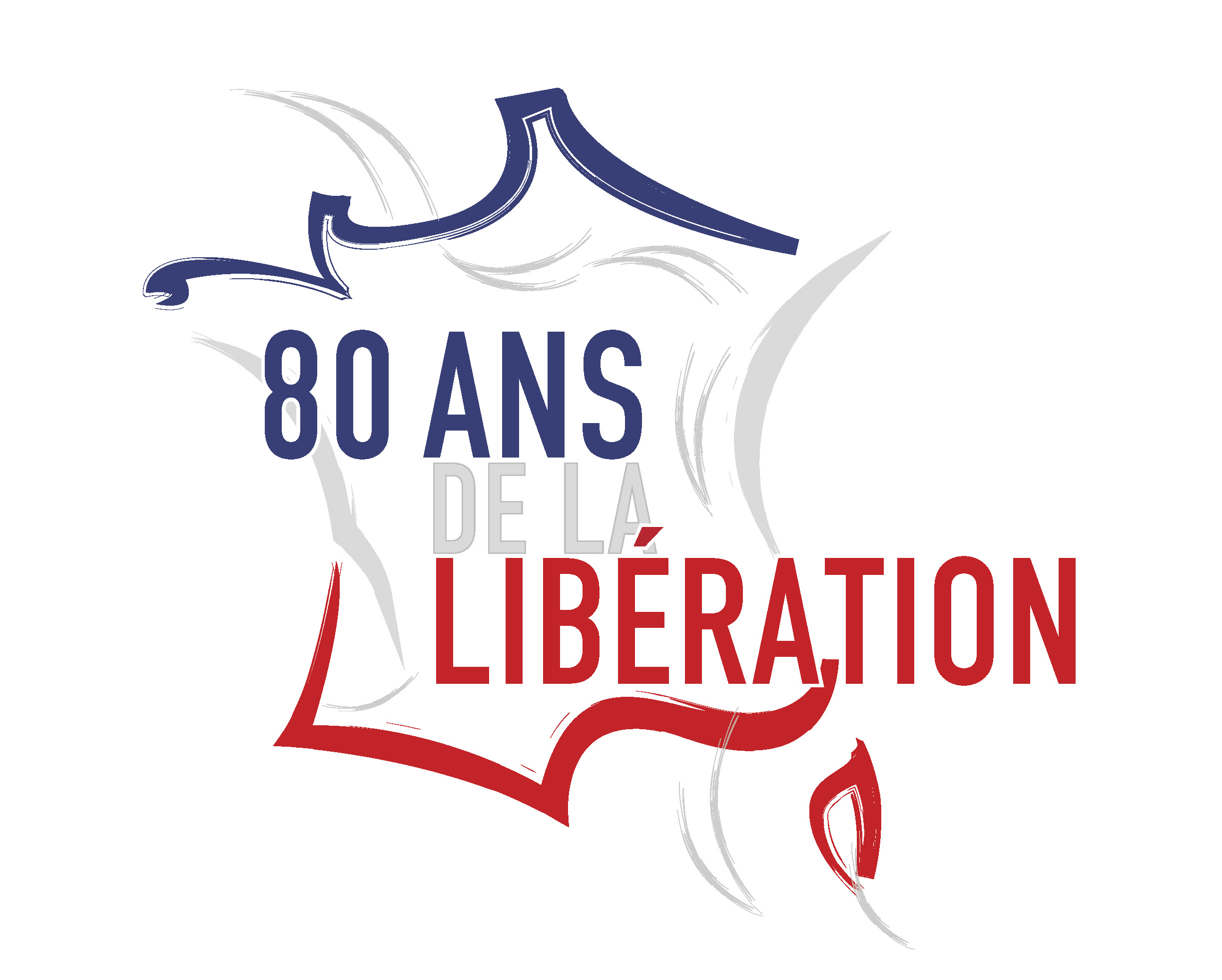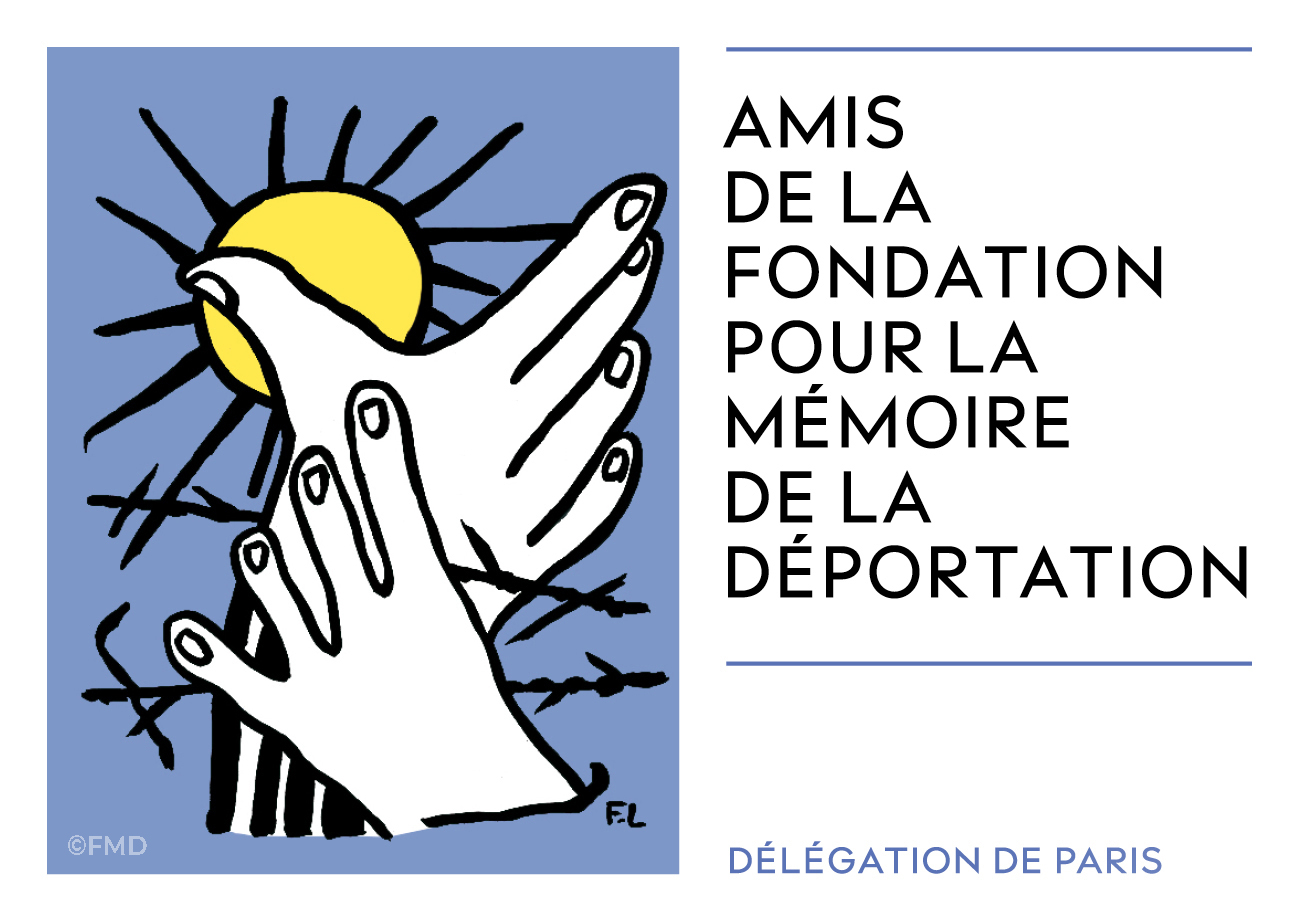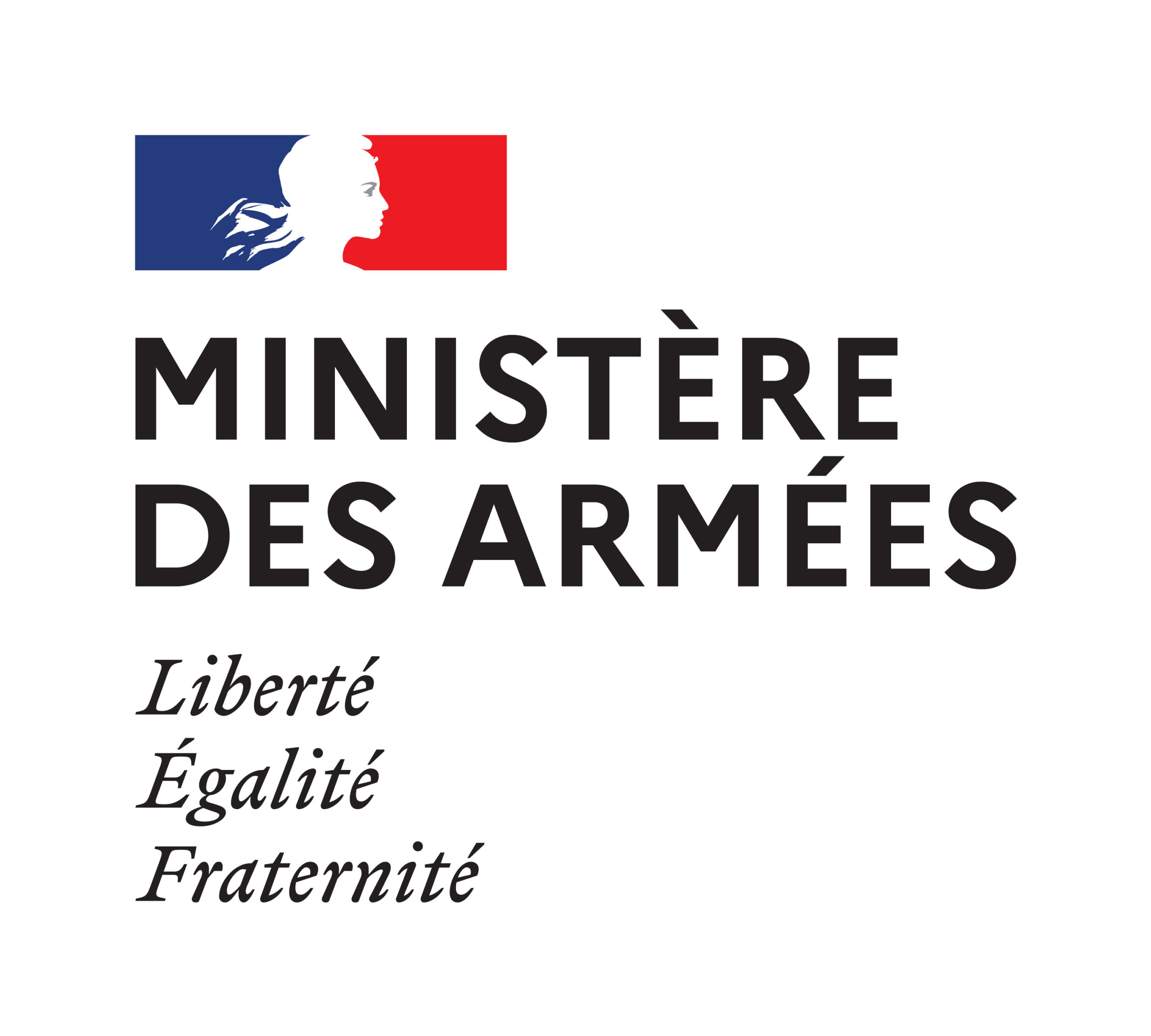BUNA-MONOWITZ
(AUSCHWITZ III)
Opened in october 1941
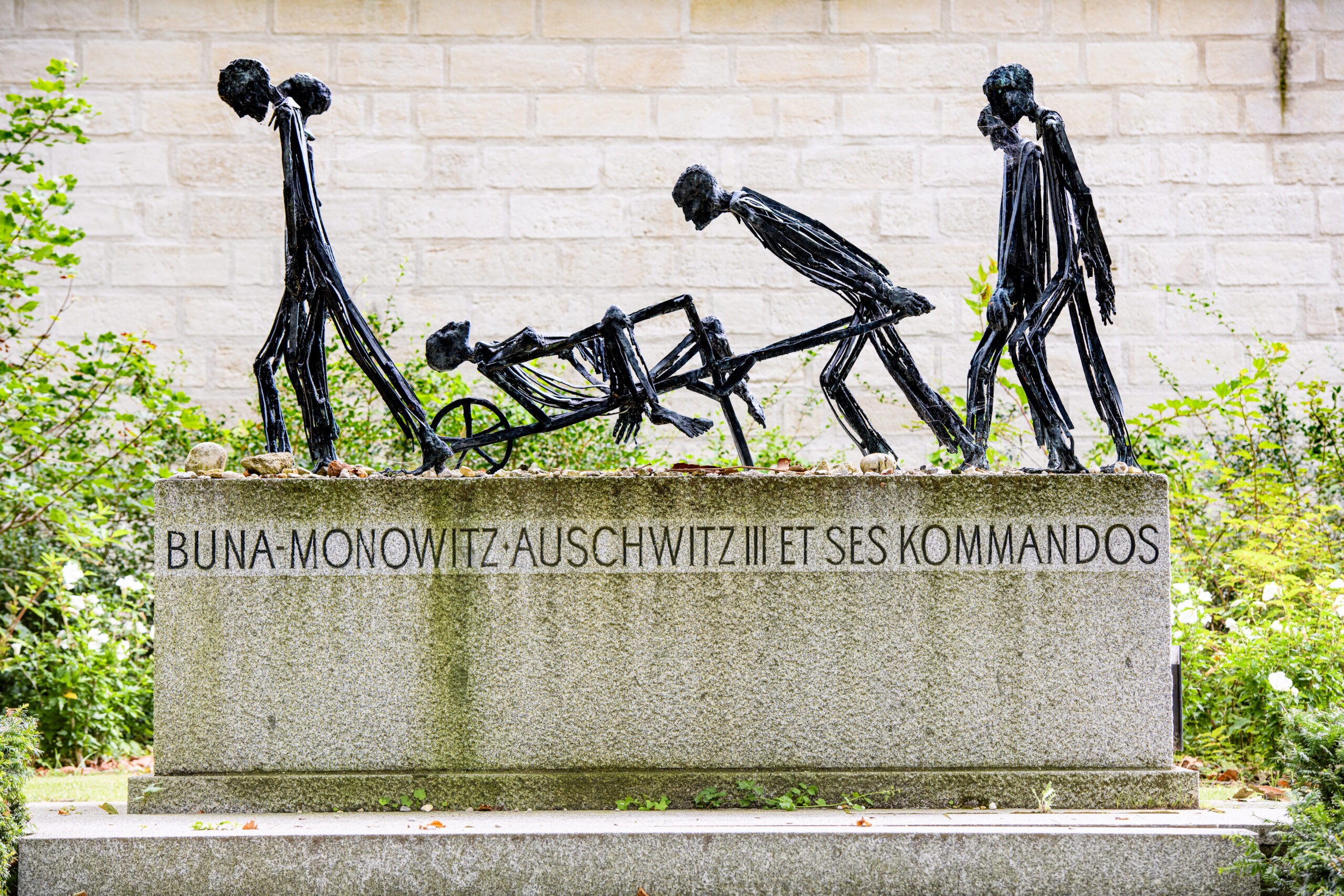
© Vincent Gerbet
Monument description
Inaugurated on February 4, 1993, the monument stands on a granite base. The sculptor, Louis Mittelberg, also known as Tim, was a Polish artist and a former prisoner of war in 1940. Escaping to the USSR in 1941 and later to the UK, he joined the Free French forces.
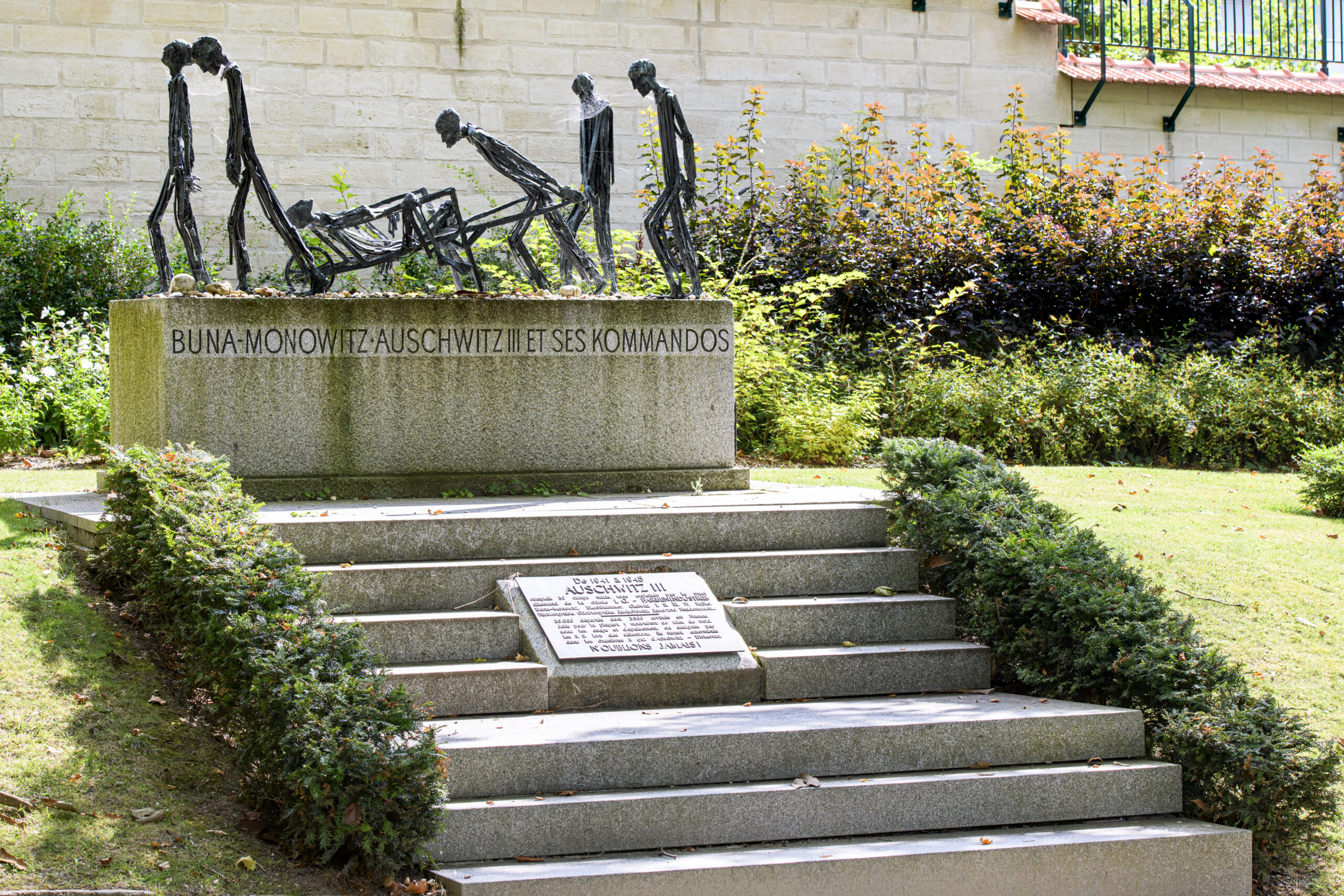
© Vincent Gerbet
The sculptor has placed five slender, emaciated figures whose thinness is accentuated by the light passing through them. This light passing through the bronze strips evokes the striped uniforms of the deportees. These bronze sculptures immediately bring to mind the slender silhouettes of Giacometti, the Swiss sculptor and painter deeply affected by the horrors of deportation. The bent and sagging silhouettes testify to their fragility and suffering. These five deportees return from work at the end of the day. One of the inmates stands very straight, head held high, looking dignified and confident in the future. Another, leaning forward, pushes a wheelbarrow containing a sixth man, a dead comrade reminding of the high mortality rate. Everyone had to return from work, alive or dead, for the detainees to be counted during the evening roll call. Inscribed on the stone base is: Buna-Monowitz-Auschwitz III and its Kommandos. On a bronze plaque below the stone base, the following text is read: From 1941 to 1945, AUSCHWITZ III had 39 Nazi camps, all operated by the German chemical conglomerate IG-Farbenindustrie: Buna-Monowitz, Blechhammer, Gleiwitz I, II, III, IV, Rajko, Fürstengrube, Günthergrube, Jawischowitz, Jaworzno, Feudenstadt… 30,000 deportees, mostly 3,500 arrested in France, Jews for the most part, died there from hunger, cold, beatings, and exhaustion, or were designated by the SS during selections, they were exterminated in the gas chambers of Auschwitz-Birkenau. NEVER FORGET!
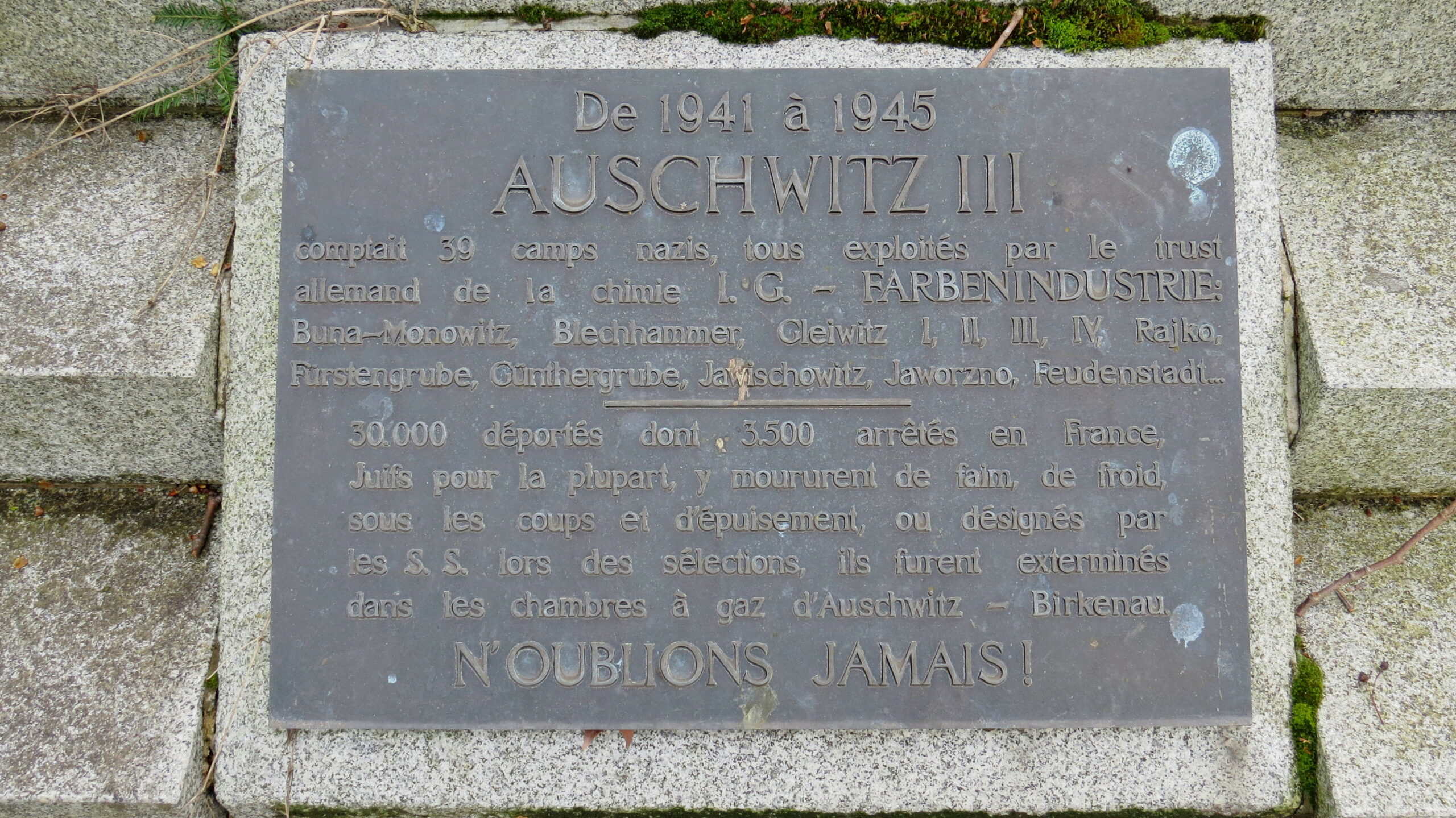
© AMFD 75
Auschwitz-Monowitz III camp
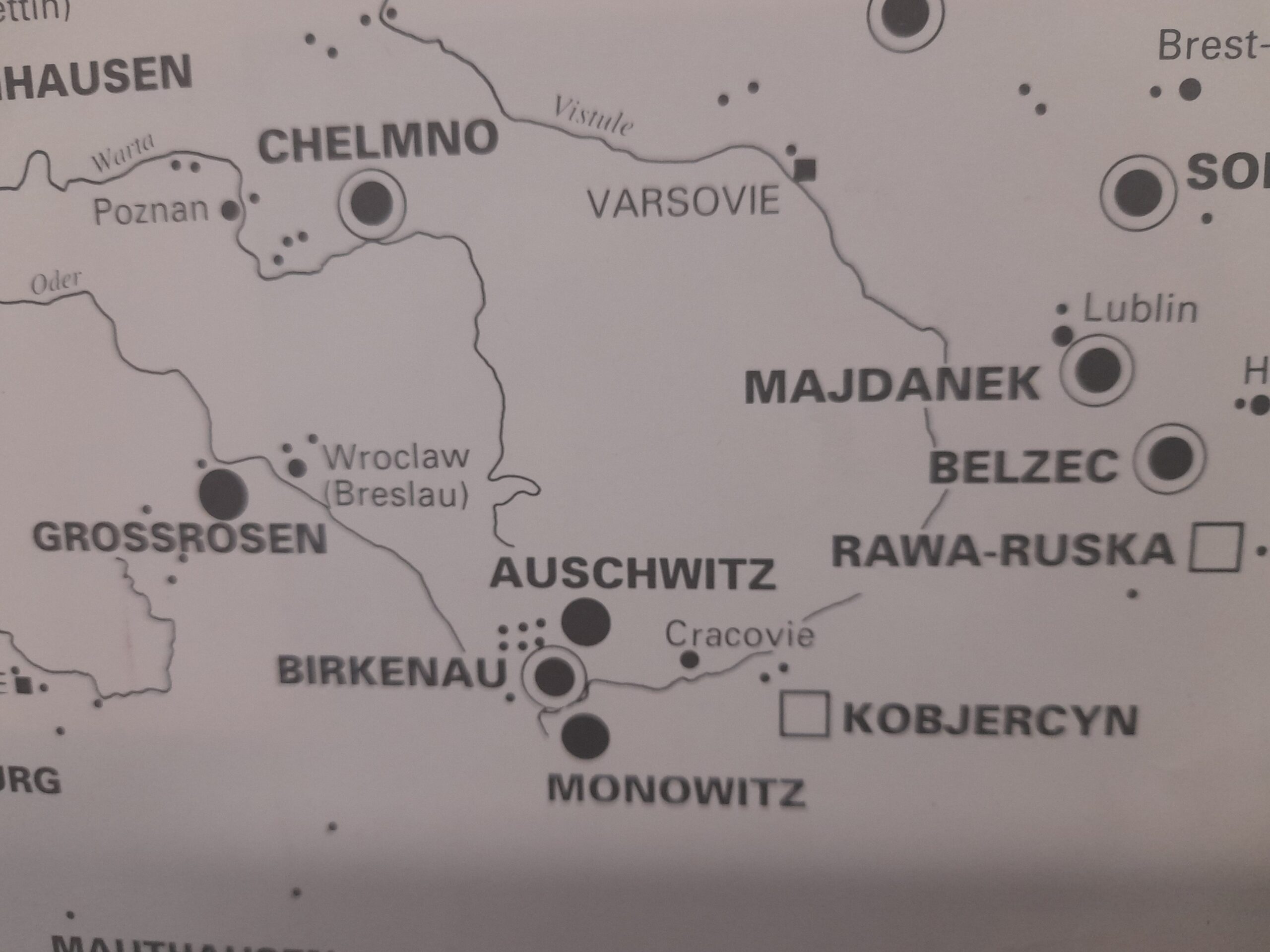
© Marcel Ruby
Sources
https://memoiresdesdeportations.org/les-camps/pologne-auschwitz-iii-monowitz
https://fr.wikipedia.org>wiki>Monowitz-Buna
Amis et passionnés du Père Lachaise (APPL) : https://www.appllachaise.net/monument-aux-victimes-de-buna-monowitz- auschwitz-iii/
BERKOVER André, Number A165572, (in cooperation with F.Wehrbach), Society of People of Letters, 2008
BRAUN Sam, Nobody would have believed me, so I chose not to testify, interview with Stéphane Guinoiseau, ed. Albin Michel, Paris, 2007.
LEVI Primo Levi, Si c’est un homme (Se questo è un uomo), translation by Martine Schruoffenegger, ed. Pocket, 1988
LEVI Primo, Les Naufragés et les Rescapés, (I sommersi e i salvati), ed. Gallimard, Paris, 1989
PALANT Charles: Je crois au matin”, ed. The Manuscript/Foundation for the Memory of the Holocaust, 2009.
WIESEL Elie, The Night, testimony, Paris, Les Éditions de Minuit, 1958
Buna-Monowitz
(Auschwitz III)
Camp opened in october 1941

© Vincent Gerbet
Monument Description
Opened on February 4, 1993, this ensemble stands on a granite base. The sculptor, Louis Mittelberg, also known as Tim in the world of press drawing, was of Polish origin. Captured in 1940 along with 217 other soldiers, he escaped in 1941 towards the USSR before Operation Barbarossa and then to Great Britain, where he became a ‘Free Frenchman’.

© Vincent Gerbet
The sculptor has positioned five elongated, emaciated figures, their thinness emphasized by the light passing through them. Reminiscent of the slender silhouettes of Giacometti, these bronze sculptures reflect the sculptor’s deep connection with the horrors of deportation. The bowed and slumped silhouettes bear witness to their fragility and suffering. These five deportees are depicted returning from work at the end of the day, with one standing tall and proud, another pushing a wheelbarrow carrying a deceased comrade, highlighting the high mortality rate. The stone base bears the inscription « Buna-Monowitz-Auschwitz III and its Commandos. »
A bronze plaque below details that from 1941 to 1945, Auschwitz III housed 39 Nazi camps run by the German chemical trust IG-Farbenindustrie, where 30,000 deportees, mostly Jews, perished from starvation, cold, abuse, exhaustion, or were exterminated in the gas chambers of Auschwitz-Birkenau. Let us never forget.

© AMFD 75
Le camp d’Auschwitz-Monowitz III

© Marcel Ruby
After the establishment of Auschwitz in May 1940 and Birkenau in October 1941, the Nazis built a forced labor camp near Monowitz, known as Auschwitz III, later becoming autonomous in November 1943. This vast industrial complex was operated by the Nazis and the IG-Farben group, with companies like Siemens and Krupp also setting up operations. The region’s rich resources led to the production of rubber and synthetic fuels, notably under the trademark Buna. Approximately 30,000 deported individuals, including Jews, Poles, French, Russians, and Germans, were subjected to intense labor, while unethical medical experiments were conducted on contaminated prisoners. Close to 25,000 perished at Buna-Monowitz, with unfit detainees being sent to the gas chambers at Birkenau. This dark history culminated in « death marches » in January 1945, leading to the liberation of the camps by the Red Army on January 27. Survivors faced liberation in other camps from May 1945 onwards, commemorating this tragic past on January 27 as the International Day of Commemoration in Memory of the Victims of the Holocaust.
Sources
https://memoiresdesdeportations.org/les-camps/pologne-auschwitz-iii-monowitz
https://fr.wikipedia.org>wiki>Monowitz-Buna
Amis et passionnés du Père Lachaise (APPL) : https://www.appllachaise.net/monument-aux-victimes-de-buna-monowitz- auschwitz-iii/
BERKOVER André, Number A165572, (in cooperation with F.Wehrbach), Society of People of Letters, 2008
BRAUN Sam, Nobody would have believed me, so I chose not to testify, interview with Stéphane Guinoiseau, ed. Albin Michel, Paris, 2007.
LEVI Primo Levi, Si c’est un homme (Se questo è un uomo), translation by Martine Schruoffenegger, ed. Pocket, 1988
LEVI Primo, Les Naufragés et les Rescapés, (I sommersi e i salvati), ed. Gallimard, Paris, 1989
PALANT Charles: Je crois au matin”, ed. The Manuscript/Foundation for the Memory of the Holocaust, 2009.
WIESEL Elie, The Night, testimony, Paris, Les Éditions de Minuit, 1958
Délégation de Paris des Amis de la Fondation
pour la Mémoire de la Déportation
31 Boulevard Saint-Germain 75005 Paris
Contact : afmd.dt75@gmail.com
©AFMD75

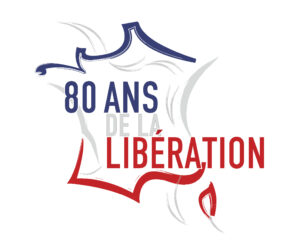
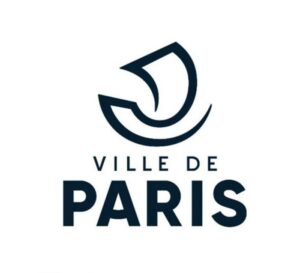
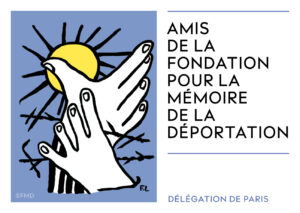
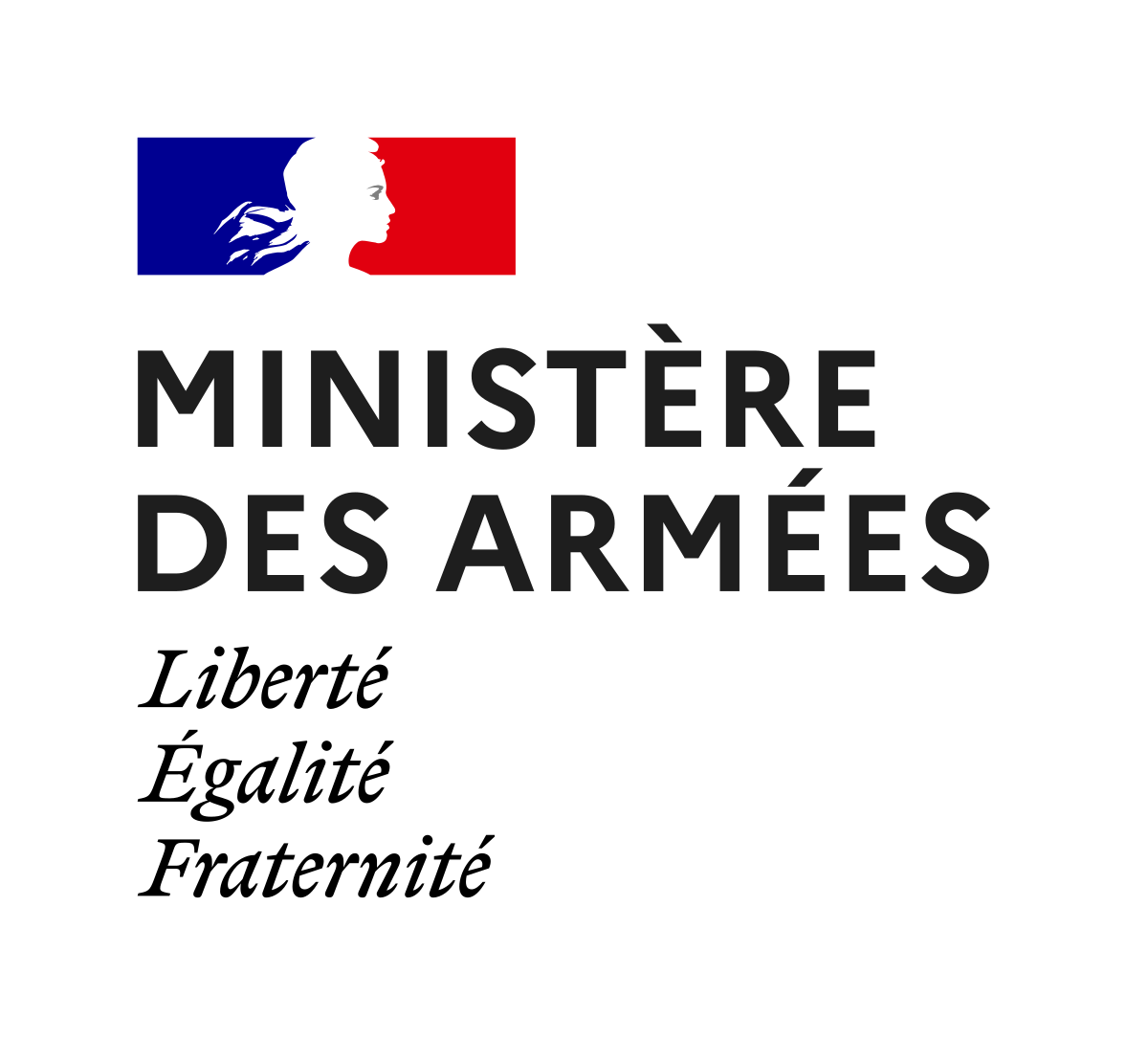
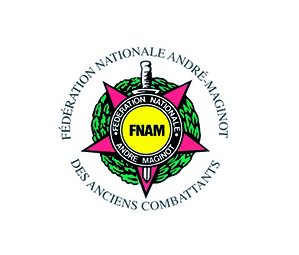
Délégation de Paris
des Amis de la Fondation
pour la Mémoire de la Déportation
31 Boulevard Saint-Germain
75005 Paris
Contact :
afmd75@gmail.com
©AFMD75
Délégation de Paris
des Amis de la Fondation
pour la Mémoire
de la Déportation
31 Boulevard Saint-Germain
75005 Paris
Contact
afmd75@gmail.com
©AFMD75

